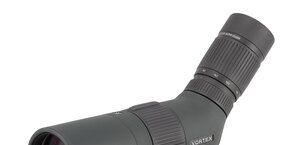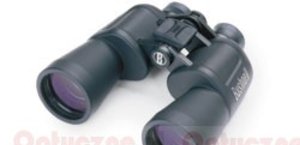How to choose low light conditions binoculars?
3. Why exactly 7 mm?
So constructing and later choosing binoculars, the most important thing is to provide an eye with entire light gathering by the lens. It’s possible only when the ‘exit pupil’ of a lens is smaller or equal to the human’s pupil. In other words typical human’s pupil widens to 7mm so we should be interested in buying equipment where the ‘light circle’ created right after the eyepiece is smaller or equal to 7mm. If we don’t take this condition into consideration, a part of light gathered by lens will be wasted. During a night observations we can’t afford to wastage like this.
Extensive objects observed by binoculars are extended as much as tell us the magnification parameter given on our binoculars. So when magnification is 8x, the image appeared on retina is linearly 8x magnified. In a sense of whole object area, we got product of 8*8 so 64. (Aerial) Surface brightness of extensive objects decreases alongside with square of magnification.
Please Support UsIf you enjoy our reviews and articles, and you want us to continue our work please, support our website by donating through PayPal. The funds are going to be used for paying our editorial team, renting servers, and equipping our testing studio; only that way we will be able to continue providing you interesting content for free. |
- - - - - - - - - - - - - - - - - - - - - - - - - - - - - - - - - - - - - - - - - - - - - - - -
This effect is compensated by quantity of light gathered by a lens. In compare to ‘naked eye’ the quantity of light gathered by lens is bigger equally to this lens dimensions in compare to human’s ‘exit pupil’. It’s like two bowls exposed to the rain. More rainwater will be gathered into bowl with bigger diameter. Here instead of rainwater we got light running into eye.
To compensate the decrease of object’s surface brightness (connected with object magnification by binoculars) we have to use a lens definitely greater that eye pupil. It easy to count how much greater. Sticking to the previous example of 8x magnification, we know that its surface brighness of object decreased 64 times. To compensate that difference, a lens need to gather 64x more light than opened to 7mm human’s pupil. It’s possible if a lens will be 8x bigger than pupil, so 7*8=56 and it brings us exactly to 8x56 parameters.
A bright reader might ask why not to increase value of gathering light? In our example we could use not 8x but even 9x lens which may gain 81x more light! Hmm.. well ok, indeed it will gain 81x more light but unfortunately it will not supply everything into an eye. Why? Parameters of our binocular will be 8x63 and ‘exit pupil’ 7.9mm which means that not whole light would get into a 7mm pupil in eye.
All in all a lens objective diameter in night-time binoculars should be as much larger in compare to an exit pupil as magnification of given binoculars.







